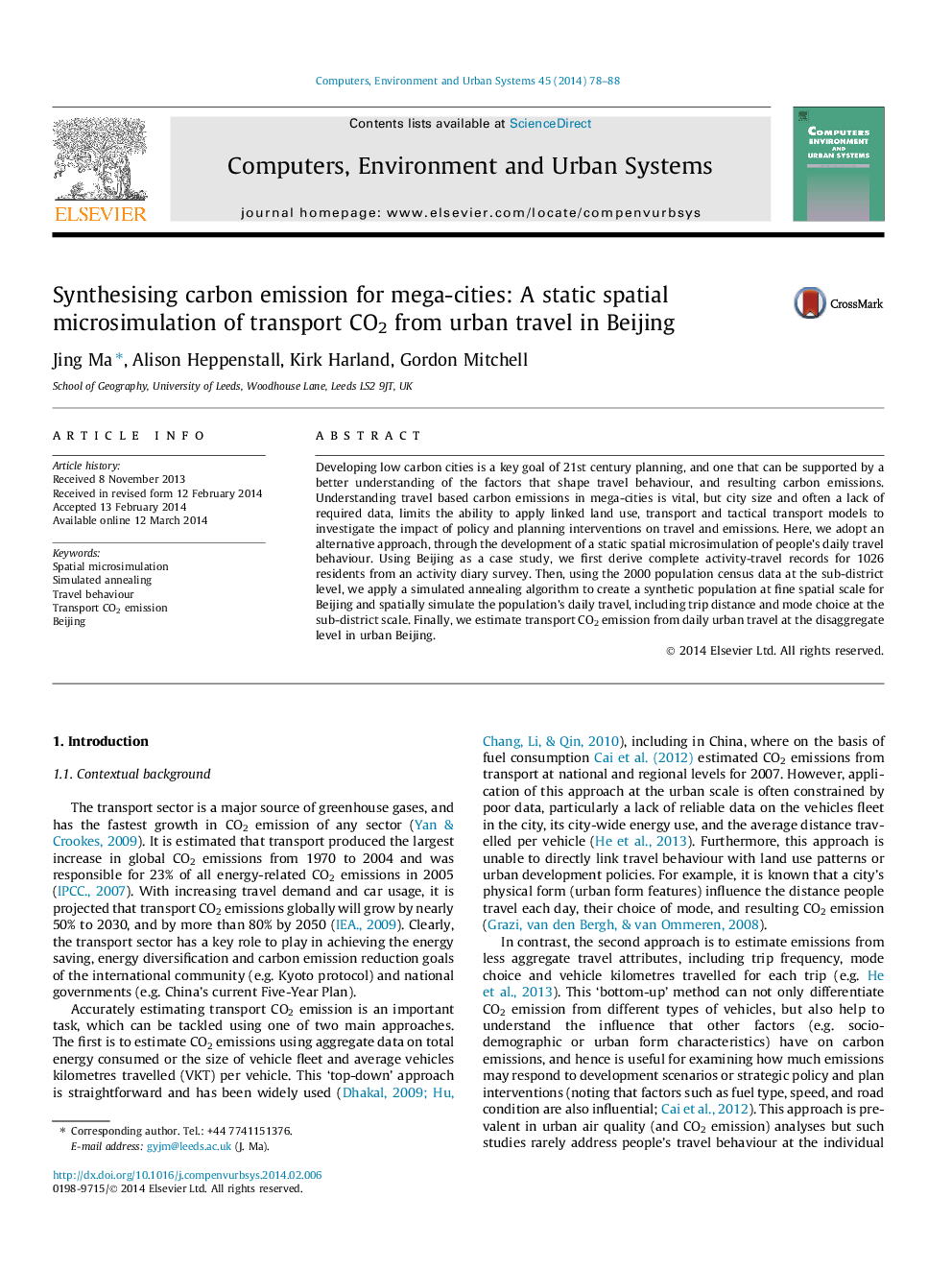| Article ID | Journal | Published Year | Pages | File Type |
|---|---|---|---|---|
| 506388 | Computers, Environment and Urban Systems | 2014 | 11 Pages |
•A static spatial microsimulation is developed at the sub-district level in urban Beijing.•The realistic synthetic population’s travel distance and mode choice are spatially simulated at micro-scale.•Transport CO2 emission from urban travel is also synthesized at the disaggregate level.•It presents a new ‘bottom-up’ methodology to provide improved transport CO2 emission estimation.
Developing low carbon cities is a key goal of 21st century planning, and one that can be supported by a better understanding of the factors that shape travel behaviour, and resulting carbon emissions. Understanding travel based carbon emissions in mega-cities is vital, but city size and often a lack of required data, limits the ability to apply linked land use, transport and tactical transport models to investigate the impact of policy and planning interventions on travel and emissions. Here, we adopt an alternative approach, through the development of a static spatial microsimulation of people’s daily travel behaviour. Using Beijing as a case study, we first derive complete activity-travel records for 1026 residents from an activity diary survey. Then, using the 2000 population census data at the sub-district level, we apply a simulated annealing algorithm to create a synthetic population at fine spatial scale for Beijing and spatially simulate the population’s daily travel, including trip distance and mode choice at the sub-district scale. Finally, we estimate transport CO2 emission from daily urban travel at the disaggregate level in urban Beijing.
